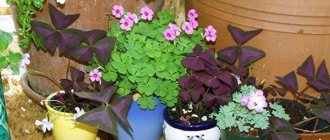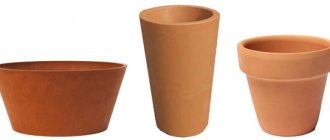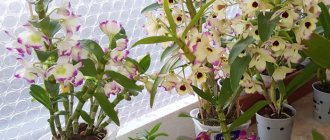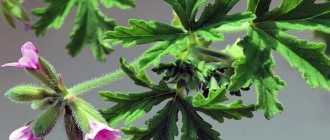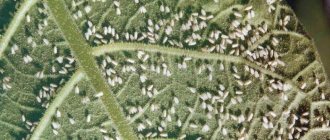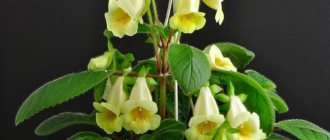15197
Cuttings are a method of propagating plants using cut woody or non-woody shoots. Dried, deformed, infected branches are not suitable for rooting. This method is ideal for propagating many flowers and garden shrubs, since it does not cause much trouble, and the result exceeds all expectations. The gardener gets enough seedlings to decorate the local area, window sills and a nice present for friends.
Hydrangea bush near the fence
Flower growers give many practical recommendations about propagating hydrangea by cuttings in spring and autumn. Each of them contains information on the selection and timing of procurement of planting material, rules for cuttings of various types of hydrangeas.
Timing for harvesting cuttings
The timing of cuttings directly depends on the planting material. For propagation in late spring (from May to June), young growths are suitable - the tips of shoots no more than 10-15 cm long. A similar rule applies when propagating spirea by cuttings. From late June to early July, shoots with a woody base are selected for rooting. In summer they are better suited for planting. In autumn, material with bud ovaries is used. It takes root better than others in substrates and produces abundant roots. On some cuts, flower ovaries can ripen and produce abundant color even at the rooting stage.
Cutting shoots
The optimal time for harvesting is spring. It is at this time that the active movement of sap along the trunks begins. Hydrangea shoots receive the maximum amount of nutrients in spring. In this regard, the regenerative potential of the cutting and the chances of rapid growth of the root system increase.
Caring for planted cuttings
Immediately after planting, it is recommended to spray the cuttings with settled water from a fine-grained spray bottle. It is also necessary to organize a small greenhouse.
To do this, the container with the planted cuttings is covered with a transparent plastic bag or glass jar and placed in a shaded place. This will protect the cuttings from overheating and drying out.
The greenhouse needs to be ventilated daily. Watering should be done as needed - approximately 1-2 times every 10 days. If it’s summer outside, containers with cuttings can be taken out into the garden for fresh air.
The main condition is that the ambient temperature during the day is in the range of 20-25˚, and at night – 15-18˚. If such favorable conditions are created, the roots of the cuttings should appear within a month.
How to propagate hydrangea by cuttings: selection of planting material
When choosing hydrangea cuttings, gardeners take several criteria as a guide:
- The condition of the cortex is taken into account. Completely lignified branches have difficulty putting out roots, while young ones quickly produce root buds.
- The location of the cuttings is taken into account. Basal shoots take root 3 times better than lateral shoots and are less susceptible to diseases. Preparations selected from the sunny side take root worse than shady shoots.
- A month before the collection of planting material, the mother bush is stopped fertilizing with nitrogenous agents, since a high concentration of this element accelerates the decomposition processes in the cuttings.
- Inspect the condition of the foliage. Branches with small leaf blades take root faster. In this regard, large leaves are cut in half.
- Planting material is cut only from a healthy flowering bush no older than 10-12 years.
Selection of planting material - Not least important is the preparation time. Experts recommend pruning in the morning, since at this time the plant is maximally saturated with moisture.
- The shoots are no more than a year old.
Growing hydrangea from cuttings is quite simple. To do this, select planting material that meets the following characteristics:
- size no more than 15-20 cm in length;
- thickness no more than 7 mm;
- the presence of short internodes;
- pronounced growth buds;
- at least 4 developed buds.
Similar criteria are taken into account when selecting garden and indoor planting material. In this way, it will not be difficult to obtain several specimens of indoor hydrangeas, caring for them at home is no more difficult. House bushes grow more restrainedly, unlike garden ones, but you can admire the flowering from the end of April.
Dividing the bush
This method is the simplest and most reliable. Its only drawback is that it is only suitable for bush forms. Trees and vines do not propagate this way. But it must be said that it is the bush species. A species is an evolutionarily established set of individuals, characterized by a single... hydrangeas are more popular.
Dividing the bush is best done in the spring. Then by autumn the divisions will have taken root well and will have time to properly prepare for wintering. You should start by preparing planting holes for separated hydrangea bushes. Dimensions of the pits: 50 cm in diameter and 35-40 cm in depth. Organic and mineral fertilizers are added to each pit. For this you can use compost, peat, wood ash.
A type of dividing a bush can be called the separation of offspring. Shrub forms of hydrangea produce good root growth. In the fall, carefully remove the top layer of soil above the bush and carefully separate the offspring with its roots without damaging the roots of the mother plant. Then the separated offspring are planted in the garden and grown for 1-2 years.
Fresh manure and nitrogenous fertilizers are not placed in planting holes so as not to burn the roots of the plants. They dig up the mother bush and divide it in such a way that each division has several renewal buds. From them the above-ground part of new bushes will then develop. Roots and shoots are shortened slightly before planting. Then each division is planted in a hole, watered abundantly and mulched with peat.
Processing hydrangea cuttings and rooting methods
You can grow any type of hydrangea from cuttings: tree-like, petiolate, paniculate and even large-leaved. To do this, it is necessary to properly prepare the planting material. A couple of days before cutting, indoor plants are removed to a shaded place, and garden shrubs are covered with covering material. If there is an ornamental plant growing on your site, about which you know a lot about planting and caring for, then it is worth collecting cuttings from it in order to acquire new attractive bushes for landscaping the area.
After the hydrangea has settled in partial shade, begin cutting the planting material. To work with the plant, use only professional disinfected tools. Secateurs or garden shears are suitable. For cuttings, shoots with several pairs of nodes are selected. The branches are separated from the trunk with an oblique cut.
Large leaves are cut by ½ to reduce the outflow of nutrients into the crown of the seedling.
The collection is placed for a couple of hours in solutions of biostimulants such as Epin or Cyclops. If this is not possible, the sections are powdered with any root formation stimulator: “Kornevin”, “Heteroduxin”. Thanks to them, the procedure for growing from cuttings takes half as much time. The stems are sprayed with a weak solution of manganese to give them flexibility and disinfection.
Rooting in water
Before rooting hydrangeas with cuttings, you need to select a suitable substrate or prepare an aqueous nutrient solution.
Modern gardeners practice the following methods of rooting hydrangeas:
- in water;
Sequencing - in the soil substrate.
Rooting hydrangea in water is quite simple. Moisture is a favorable environment for the growth and development of filamentous processes. Thanks to this method, a novice gardener will be able to monitor and control the process of formation of the root system. Water itself is not a nutrient medium for plants, so growth stimulants and liquid fungicides are added to it.
Sequencing:
- Preparation of a nutrient solution from water and cinnamon (1 tablespoon of mixture per 200 ml of liquid).
- Containers with dark or opaque walls are used as containers, since in the dark the root buds hatch faster.
- Place cuttings in containers, but no more than 2-3 cuttings for every 200 ml of water. The lower part of the stem is immersed in liquid to 1/6 of the total length.
- Throughout the entire period of forcing the rhizomes, the water in the containers is not changed. As the moisture evaporates, add a warm, filtered solution.
- Autumn cuttings are rooted in shaded areas, spring cuttings with a large number of leaves are rooted on the sunny side.
- To avoid rotting of the planting material, experts recommend regular aeration of the solution throughout the entire forcing period.
Roots 2-5 cm
After the plant has produced several roots ranging from 2 to 5 cm in length, it is transplanted into slightly acidic soil.
Planting in the substrate
The following mixtures can be used as soil:
- planting cuttings in vermiculite and river sand in proportions 1:1;
- perlite, garden soil, peat and river sand in proportions 1:1:1:1;
- vermiculite, garden soil, peat, river sand in proportions 1:1:1:1 with the addition of 1 g of citric acid.
Woolen ropes are laid out at the bottom of the planting boxes in increments of 5 cm. The ends of the ropes are lowered into containers with water, and one of the substrate options is poured into the boxes. Thanks to the wicks, the soil will be optimally moistened and the rhizomes will not rot.
The bottom is wrapped in rags to better warm up the root buds and speed up the growth of the root system.
The blanks are evenly placed over the entire area of the box with an interval of 10-15 cm at an angle of 45°. The cut should go 2-3 cm into the ground. The container is placed on an illuminated area. As necessary, add water to the container, and if swollen buds are found on the shoots, fertilize the hydrangea.
Growing sprouts
When planted correctly, the seedlings take root within a month, after which they are planted in individual peat or plastic pots. Seedlings can be kept in them for up to 3 months before planting in open ground or moving to a larger pot for home growing.
Transplantation to a permanent place
Next spring, the rooted hydrangea cuttings are ready to be transplanted to a permanent location. First they need to be hardened a little, gradually accustoming them to the ambient temperature. If the seedlings are not strong enough, you can move them to a school for additional growing. Transplantation can be carried out only when warm weather sets in.
When transplanting, add 1 tbsp to each hole. spoon of mineral complex fertilizer. The day before the procedure, do not water the plant! This will allow the earthen lump to be well separated from the walls of the container.
After planting, cut the hydrangea by 2/3 of its length so that the bush grows more luxuriously. If the composition requires a medium-sized plant, then pruning is not necessary.
Accurate execution of hydrangea cuttings makes it possible to decorate the area with amazing flowers
Specifics of cuttings of various types of hydrangea
In order to propagate hydrangea as efficiently as possible, it is necessary to take into account its typological features. For example, cuttings of paniculata hydrangea are carried out in the spring, and cuttings of tree hydrangea are carried out in the fall.
When preparing large-leaved varieties for transplanting, their leaves are always cut by half, and when planting in open ground, the tops of seedlings are cut 10 cm from the ground for better rooting and tillering. When collecting planting material from paniculata hydrangea in the fall, lignified shoots are selected for cutting.
Video about 3 ways to grow new seedlings.
Growing from cuttings is a popular way to propagate hydrangeas. It does not require much time and effort, and the percentage of shoots rooting is relatively high. The most suitable time for cuttings is late spring. During cosmetic pruning of a bush, gardeners not only give it the desired shape, but also collect planting material. Over the summer, the cuttings take root, undergo adaptation and become suitable for autumn planting in open ground, followed by wintering under cover.
Cuttings from lignified branches
In September, when it’s time to prune the hydrangea and rid it of excess branches, lignified cuttings are prepared for propagation of the shrub. Take only mature, completely healthy shoots, which have 3 internodes.
- The lower oblique cut on the cutting is made at a distance of 1 cm from the lower bud, the upper - at a distance of 2-3 cm from the upper bud. Until the second bud from the bottom, all the leaves break off. The upper leaf plates are cut by a third to reduce moisture evaporation.
- For rooting, prepare the substrate: peat, pine litter - one part each, humus, soil and perlite - 2 parts each. A layer of fine gravel, 2 cm thick, is placed at the bottom of the pots.
- The cuttings treated with a root formation stimulator are immersed in the substrate at an angle of 45 degrees, immersing 4 cm in the soil.
- Pots with plants are covered with plastic containers on top or placed in a mini greenhouse for the entire rooting period - 30 days.
The cuttings are watered daily with cold water, making sure that there is no excess moisture in the substrate.
Successful rooting will be noticeable by the new leaves that the cutting will produce. The greenhouse is removed from the seedlings, and the plants are kept in a room with a temperature of +22 degrees until spring, providing the hydrangea with additional lighting.
How to cut a hydrangea branch: what is important to consider
Let us immediately warn you that the cutting method is effective for propagating plants that have not yet bloomed. Since you are taking a cutting from a profusely flowering hydrangea
, the chances of success are low. However, if you have “green fingers,” as they say in England about those who can easily grow flowers, the shoot can take root and take root.
Basic rules for cutting hydrangea:
- The flower is rooted in spring or summer: May-July is ideal, August is no longer desirable.
- Only large-leaved hydrangea can be cut from a bouquet, because only this variety is used in floristry for cutting.
- Buy a bouquet in the store in which the inflorescences are not very spreading and lush. If the flower cap is voluminous, all the plant’s energy has already been spent on flowering, and the cutting will not take root.
- The composition must be fresh. How to determine the freshness of hydrangea, read in another article
Seven-flowered.
The cutting method is also called cloning, because the cutting produces a flower that is completely identical to the donor. But this rule does not work with hydrangea. Its shade does not depend on the “parent”, but on the acid-base composition of the soil. If you lower the pH of the soil, the flowers will be blue and blue, if you increase them, they will be pink. Acidic soil is preferable, so we recommend using blue flowers both for cuttings and for subsequent cultivation.
Hydrangea propagation
Garden hydrangea propagation by cuttings
There are several ways to propagate hydrangea: division, cuttings, layering, grafting and seeds. The last two are unreasonably complicated and require a lot of time. In addition, when grown from seeds, selected varieties may lose their qualities. Propagation by layering also has a disadvantage: the number of branches that can be used for this is very limited. Therefore, gardeners prefer two methods of propagation: cuttings or dividing the root system.
The second of them is used before the start of the growing season. Most often, hydrangeas are propagated by dividing the bush during spring replanting. The plant is watered, then dug up, the roots are washed, pruned, divided into parts and planted. This method is suitable for all types of hydrangea, with the exception of paniculata.
Useful materials for growing hydrangeas
If you have never had a beautiful hydrangea in your garden before, then the following materials on planting and growing hydrangea will help you choose the optimal place to place the flower on your site, as well as properly care for this wonderful perennial shrub in the future:
- Timing and rules for planting hydrangea seedlings in spring and autumn ;
- Fertilizing for lush flowering;
- Spring and autumn pruning ;
- Shelter for the winter;
- Autumn care and preparation for winter.
And if your hydrangea begins to bloom weakly or does not bloom at all, then it will not be difficult for you to understand the reasons if you read this article .
Well, if you really want to grow hydrangea on your property by choosing the method of summer cuttings, then try to do everything correctly so that the rooting process is quick and successful. Good luck!
Video: propagation of hydrangea by cuttings


